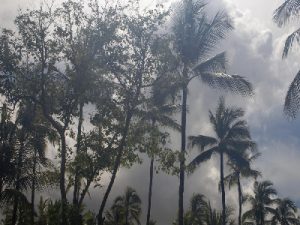Causes of Deforestation of the Brazilian Amazon
Brazil’s natural assets are legendary. The country is home to the largest rain forest biome in the world, the Amazon, containing by far the largest portion of remaining rain forest. The legal Amazon covers 60 percent of the Brazilian territory, with some 21 million inhabitants, or about 12 percent of the population, nearly 70 percent of whom live in cities and towns. Brazil also has the largest freshwater reservoir in the world, with the Amazon region alone containing up to onefifth of the world’s freshwater. Sustainable use of this enormous wealth would not only provide resources for the future, but also be a source of greater equity and poverty reduction since natural resources constitute a much higher proportion of the assets of the poor (some 80 percent) than of the rich.
 The most basic statistics used to analyze the dynamics of deforestation in Amazonia is the evolution of land use in the region. These statistics are supplied by the Agricultural Censuses. below shows that until 1970 the deforested areas used for agriculture and cattle ranching in Amazonia accounted for less than 3 percent of the total area of the region. Today, such areas account for over 10 percent. It is important to note that the denominator of the quotient is the total area of Legal Amazonia (5,075 million km2), and not just the entire originally forested area, estimated at between 3,560 million km2 (FAO 1981) and 4,190 million km2 (INPE). The main change in land use is unquestionably the huge expansion of the area devoted to planted pasture, which by 1995 covered some 70 percent of the deforested areas. Assuming (a little exaggeratedly) that fallow areas are utilized basically for seasonal livestock rotation, pastures could account for the occupation of up to 88 percent of the deforested areas. Compared with 1970, 91 percent of the increment of the cleared area has been converted to cattle ranching.
The most basic statistics used to analyze the dynamics of deforestation in Amazonia is the evolution of land use in the region. These statistics are supplied by the Agricultural Censuses. below shows that until 1970 the deforested areas used for agriculture and cattle ranching in Amazonia accounted for less than 3 percent of the total area of the region. Today, such areas account for over 10 percent. It is important to note that the denominator of the quotient is the total area of Legal Amazonia (5,075 million km2), and not just the entire originally forested area, estimated at between 3,560 million km2 (FAO 1981) and 4,190 million km2 (INPE). The main change in land use is unquestionably the huge expansion of the area devoted to planted pasture, which by 1995 covered some 70 percent of the deforested areas. Assuming (a little exaggeratedly) that fallow areas are utilized basically for seasonal livestock rotation, pastures could account for the occupation of up to 88 percent of the deforested areas. Compared with 1970, 91 percent of the increment of the cleared area has been converted to cattle ranching.
From an economic point of view, the Brazilian Amazonia can be characterized by abundant natural resources—arable land, mineral deposits, natural forests, etc.—which as yet are far from fully explored and much of which remain outside private ownership. The entirety of these resources has not yet even been quantified. The existence of abundant natural resources which have not come under private ownership can be largely explained by the high transport and development costs resulting from the unique geo-ecological conditions of the region which, with currently available technologies, translate into low profitability and reduced capacity for guaranteeing the stainability of agricultural activities.

